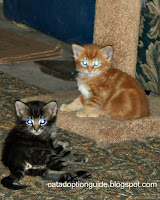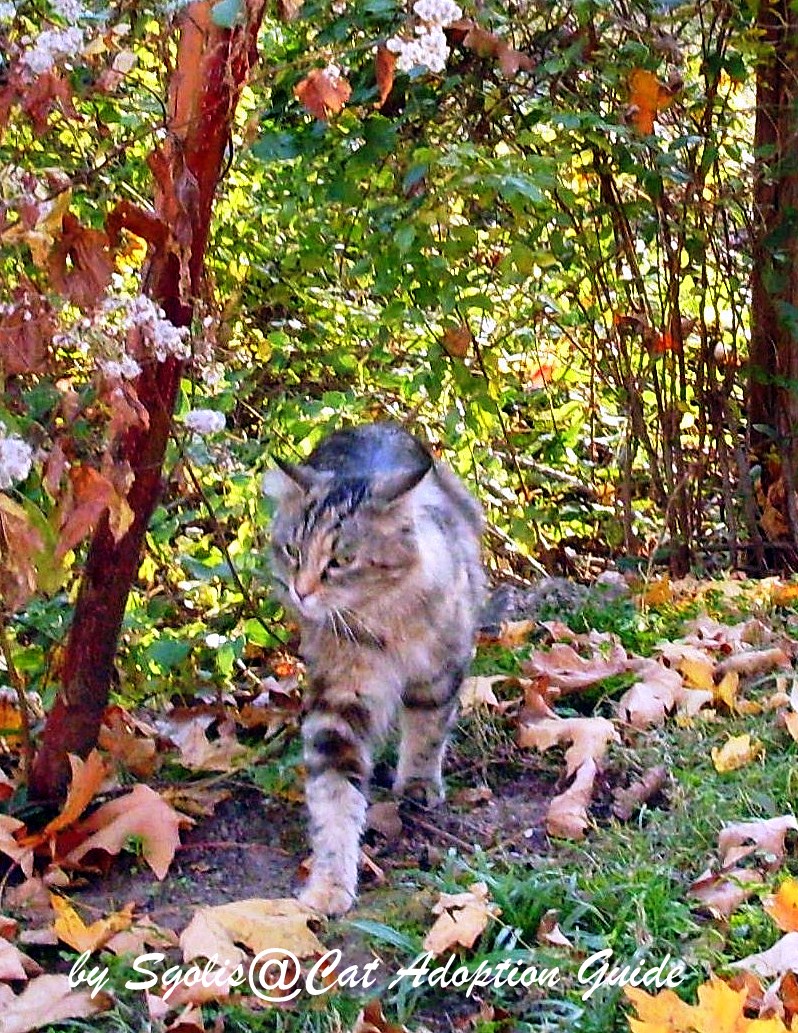Feral cats are terrified of humans and thus communicating with them must be on their terms. The best way to communicate with a wild cat is to understand and respect
the animal and then take time to allow the cat to trust you.
The feral is an animal that has been born outdoors and has no contact with humans. When a human crosses into the feral cat's territory the cat will react in defense by hissing, snarling and in some cases, they will show you their claws. In cat terminology, this means " I am afraid of you please stop and do not come any closer" or " I have kittens close by and I must protect them from all predators." The feral cat is not viscous they are merely trying to protect themselves.
I have been caring for a
feral cat colony since 1999 and in that time I have come in contact with many feral cats. In my observations at the colony, all cats get along when the
energy is positive but when a cat displays a negative or nervous behavior
then all of the colony cats are on edge.
In my studies of the feral cat, I have found that they are welcome to other animals into the colony as long as the animal comes in peace and is not threatening. A perfect example of this is a raccoon kit that was observed sleeping with feral kittens. I have observed firsthand feral cats and raccoons living in the same territory in peace and harmony.
A human to a feral cat is a predator and is not to be trusted. Most humans when they approached a feral cat are abrupt, children run toward the cat, humans talk loudly and body language is not calm. The feral cat detects that the human is threatening.
Here are some ways to communicate with a feral cat.
Take steps to communicate with the feral cat by allowing the
cat to become accustomed to your scent and your energy. Achieve this
friendship by bringing the cat food and water to a feeding station.
Set up the food at a safe distance. If the cat’s colony is 50 feet away then walk slowly to 25 feet and set up a feeding station. You may not view cats in the area however they are well
aware of your presence and watching you from afar. Put down the food and step back 25 feet and sit
calmly and quietly. While you are sitting you may read a book, but you
may not text or talk on the phone, cats hear very well and they prefer only sounds that they are accustomed to.
It takes time for a feral cat to approach the food station.
When the cats come out of hiding and approach the food station do not make direct eye contact as the feral cat will view this as hostile. Look at
them indirectly and keep your body calm. Any excitement or rise in your body temperature will communicate a
threat to the feral cat.
It is helpful to think of situations where you are petting the feral cat and talking to the cat softly. Think that the cat is purring and is showing you that they like you petting them. These thoughts will project positive energy which will comfort a feral cat.
Tips
Repeat these steps daily but instead of moving away 25 feet from
the feeding station, move one foot closer to the cat each day. By doing
this you are communicating with the cat that you come in peace and that you
will not hurt them.
The feral cat accepts you by eating the food that you bring
to them. Your calm and caring energy will communicate with the
feral cat and in time they will trust and depend on you.
Remove the food bowl after the cat leaves. Approach the feeding station slowly with your
eyes looking toward the ground. Feed the feral cats daily at the same
time. Feed them when it's raining, snowing, all-weather at the same time daily.
Warning: If you are too close to the cat they will like hiss at you. This is the cat communicating to you that you are not at a safe distance. Move back slowly four or five feet and sit calmly. If the cat hisses or snarls at you then this communication is a warning and it is best that you move further away.
You may take digital photographs with a zoom lens at a safe and non-threatening distance. Taking photographs of feral cats in the wild is enjoyable as it shows how loving and caring they are with each other in a colony setting.



